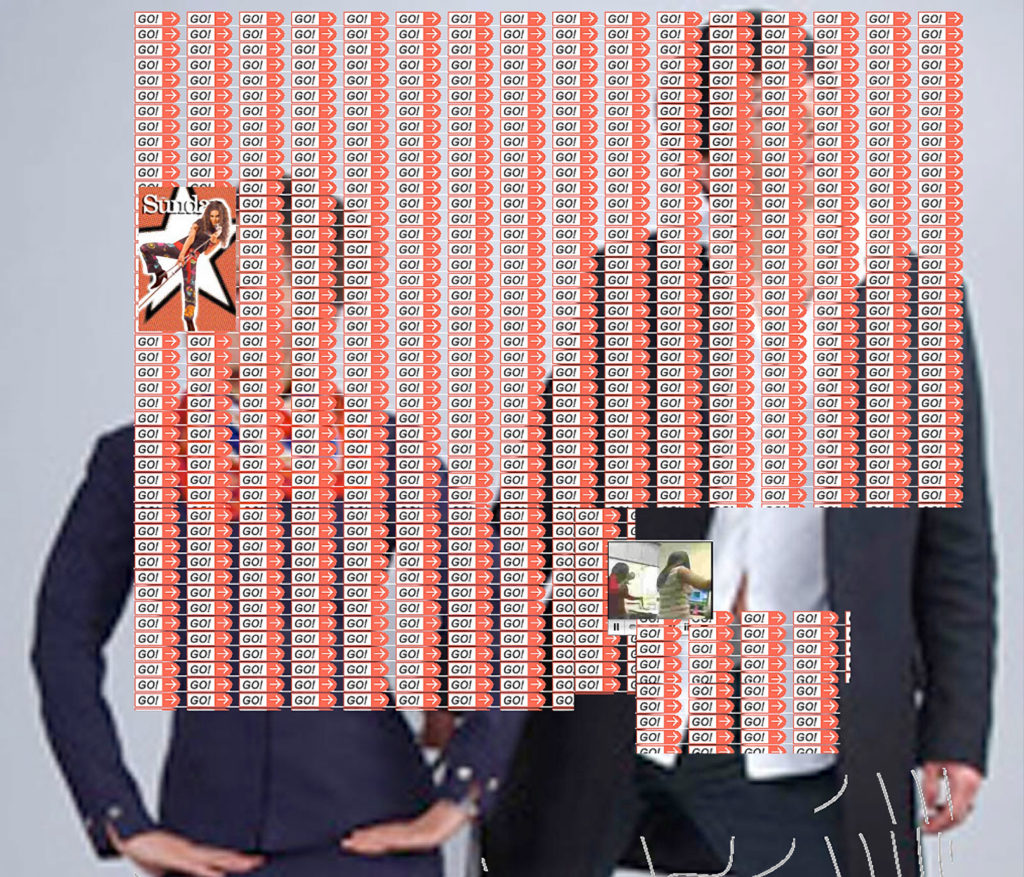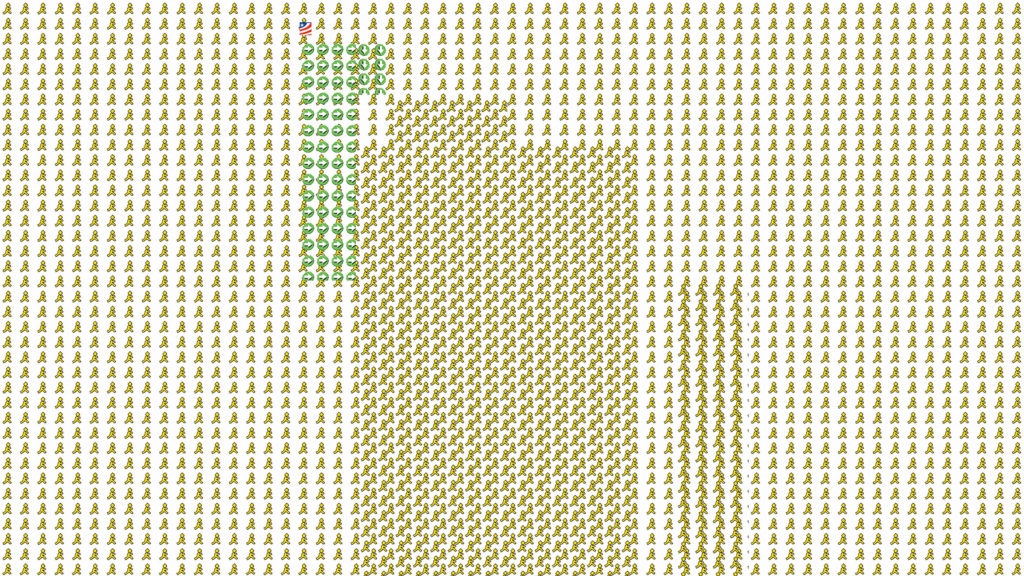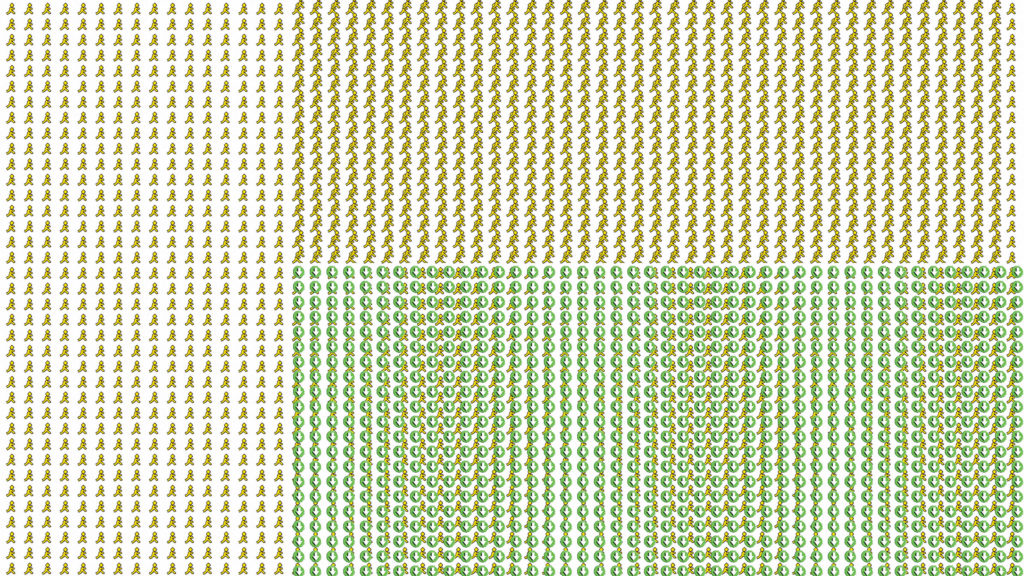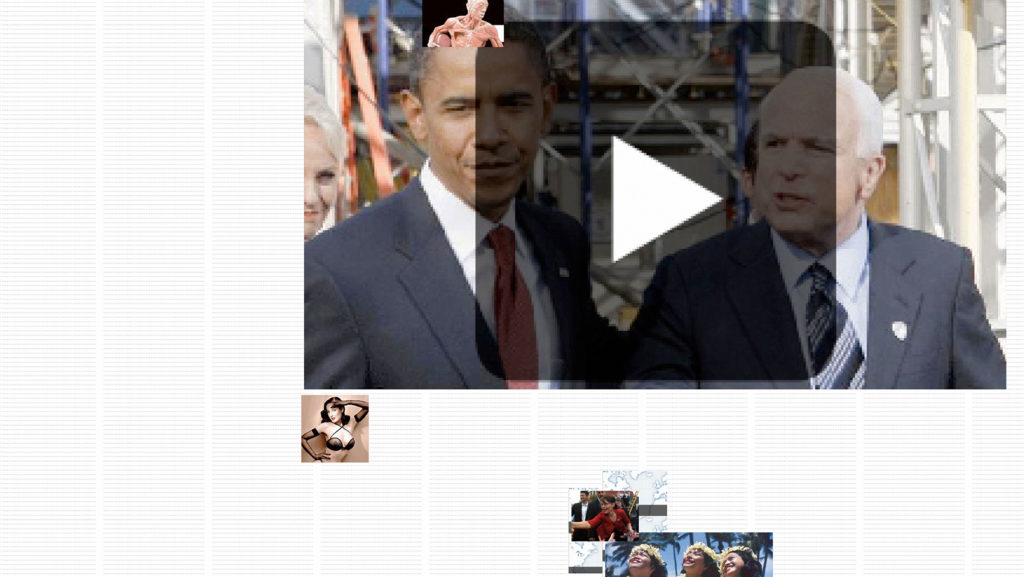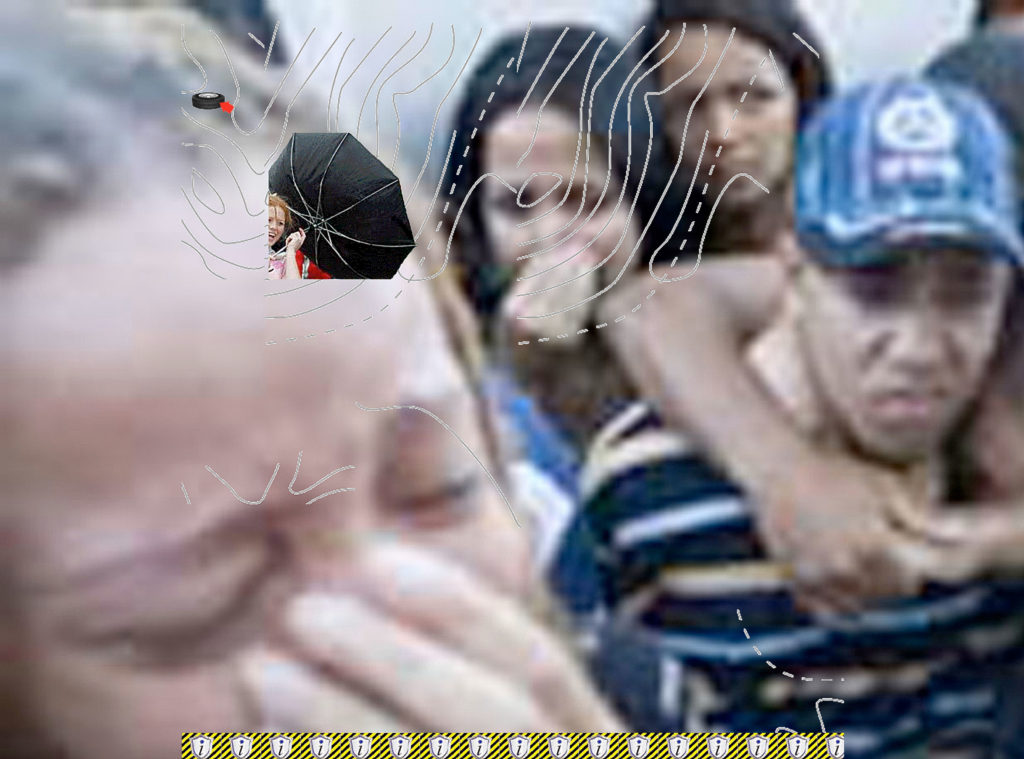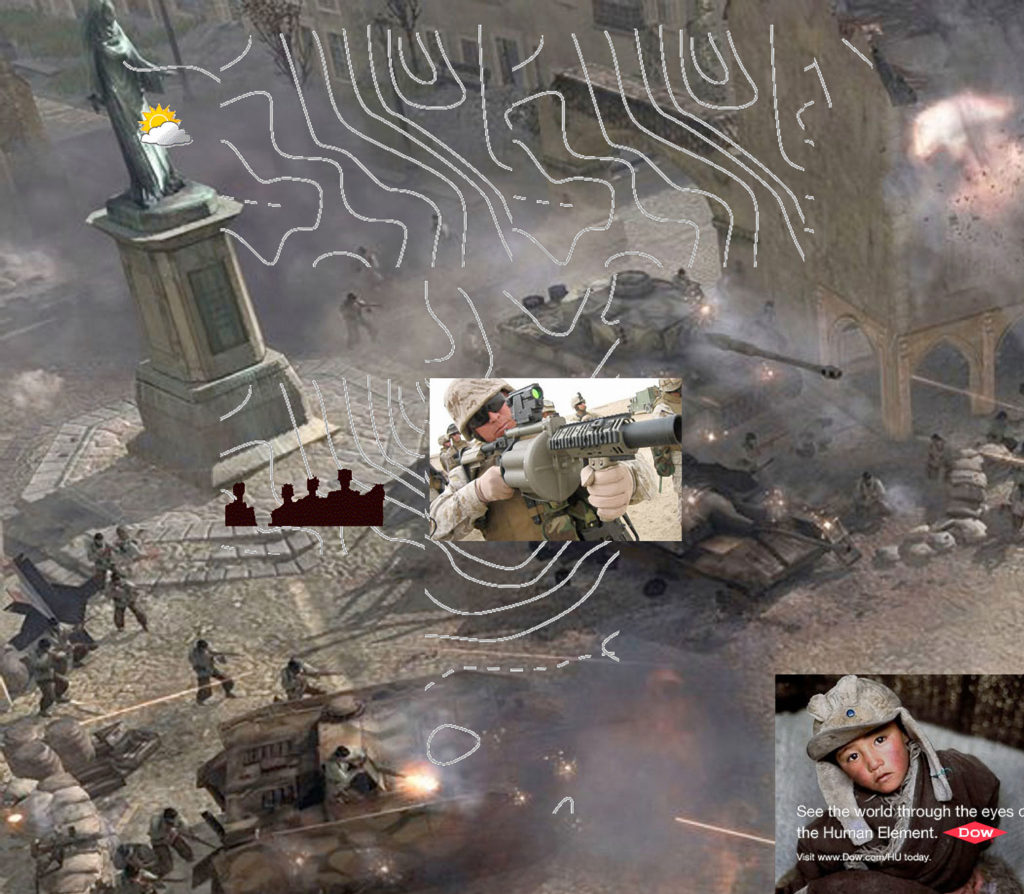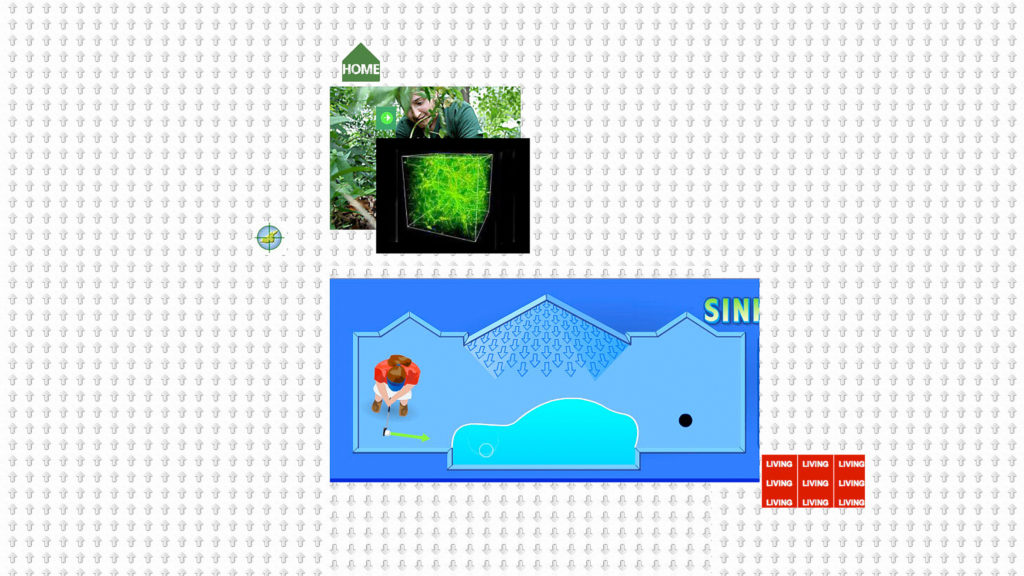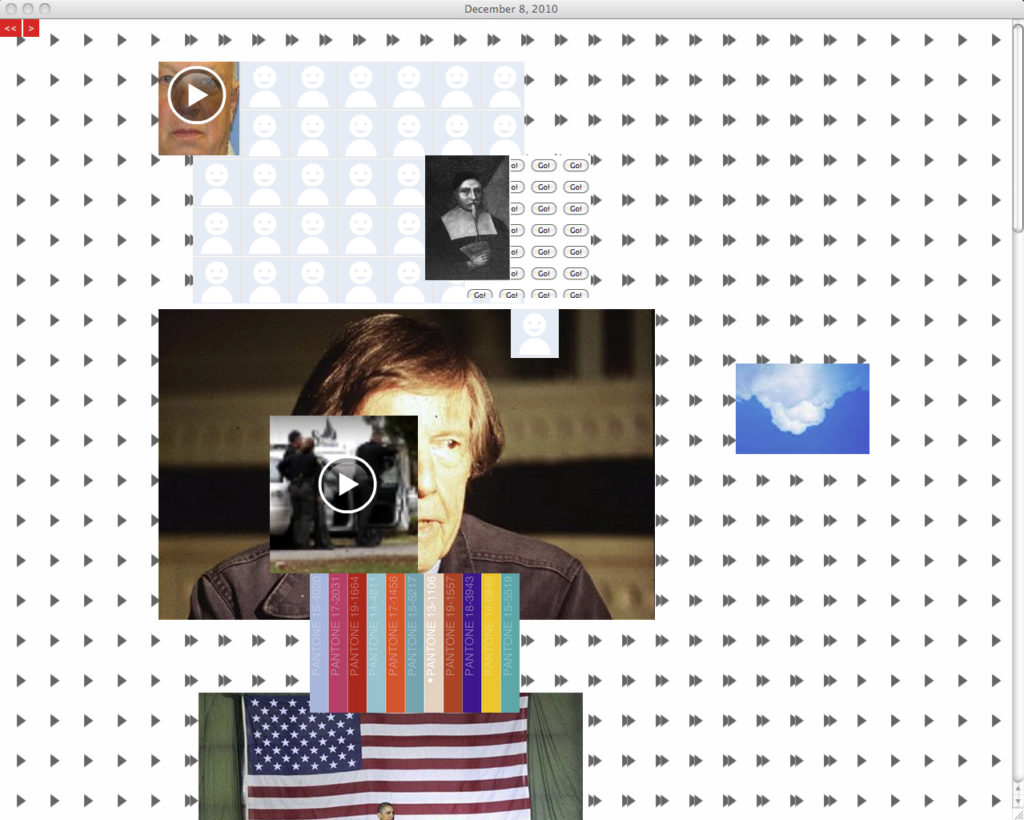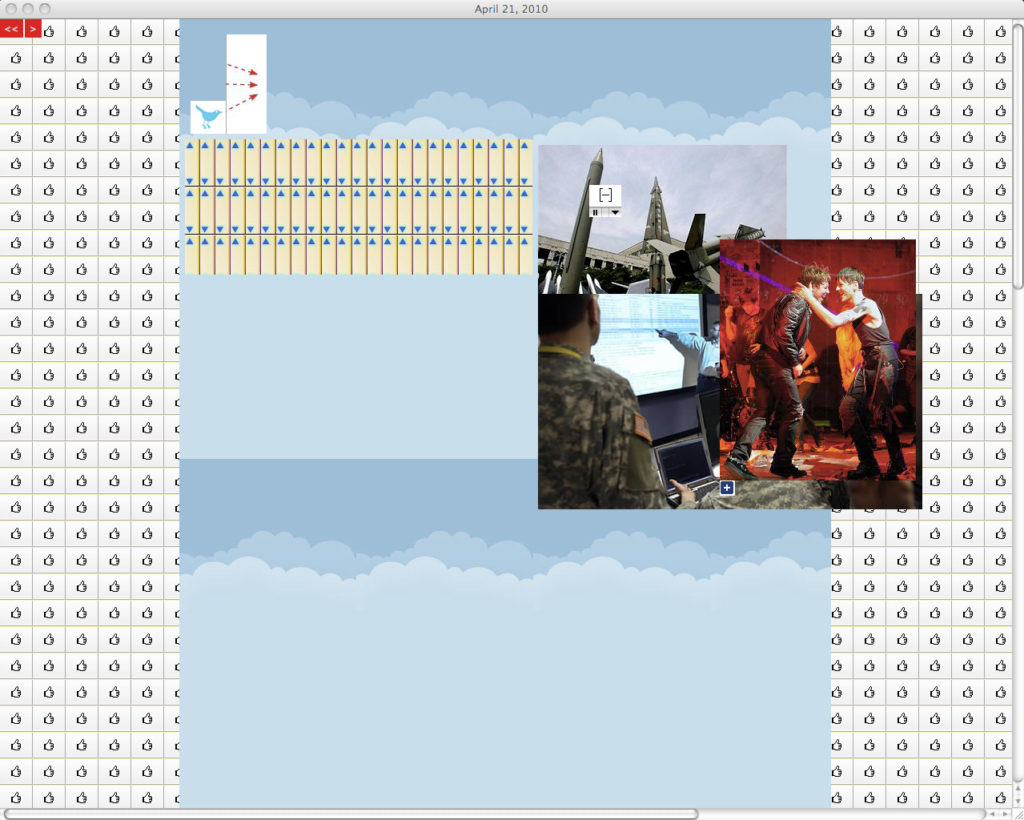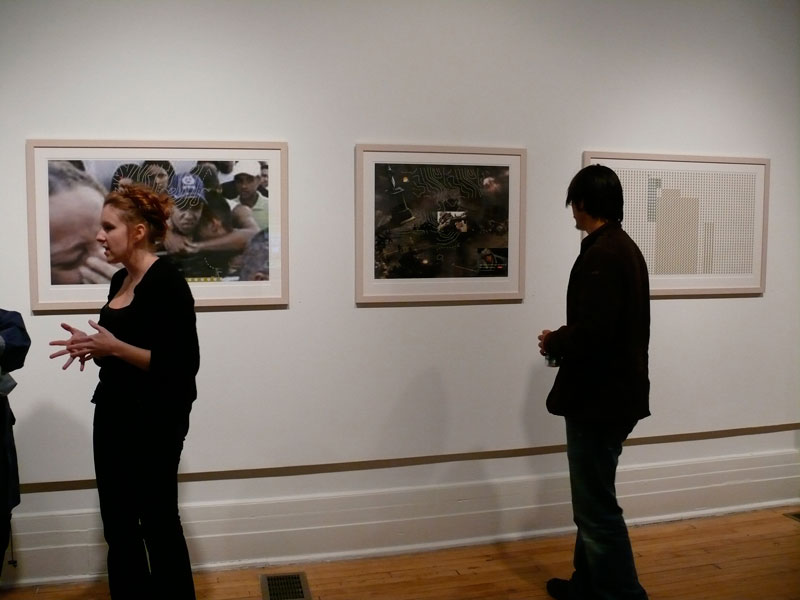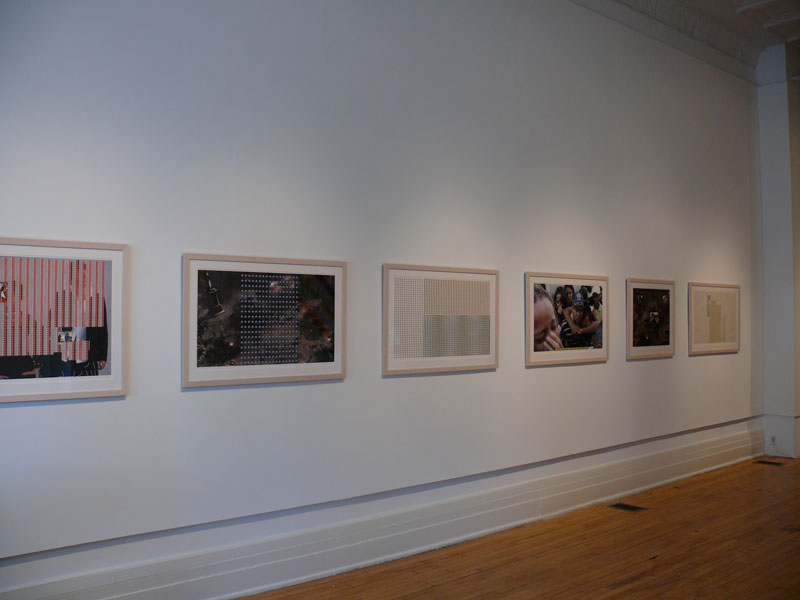Once a Day
2007–2011. Web-based collage and archival ink-jet print series. 35 by 20 in
and 26 by 20 in. www.once-a-day.net
Once a Day (2007–2011) is a series of web-based collages that form a visual mapping of conflict on the Web. Excerpts from the series have been extended into large-format prints. Taken from the raw material of automated daily Google News Alerts associated with violence, images, text and icons are appropriated, combined, and re-contextualized to form unusual symbolic encounters and a narrative collage for a particular day.
Once a Day presents an experience of the past and an interpretation of conflict. Its repetitive strategy affects our experience of familiar stories, and our navigation of the everyday visual language of the Web. It provides a malleable reading of what is remembered. Similar to ‘The Evolution of Silence,’ the project explores how emotional and complex stories can emerge from a conceptual process that incorporates the accumulation of information, and creates poetic spaces that examine the impact of conflict and our memory of events.
+ Exhibitions
Media X
1708 Gallery
Richmond, VA
(curated by Vaughn Garland)
The Overload Virtual Art Collection
Athica
Athens, GA
(curated by Joshua Bienko)
http://www.athica.org/virtualart.php
written by Joshua Bienko, 2008:
‘The Overload Virtual Art Collection distances us from the screen within which we consume. Rachele Riley’s work Once-a-day, instigates this exact type of “info-spection.” Taken from automated Google News Alerts, Once-a-day is an amalgamation of links, images, icons and text that seem both familiar and disparate. The work deals with violence and how it is processed into (and out of) the everyday barrage of Web imagery.
Within a gallery, the piece is a construction of seemingly familiar iconography in a seemingly familiar space. Once-a-day’s power however, is in its ability to affect our re-entry into the Internet outside of an art context. After viewing Riley’s work, our own navigations are peppered with her familiar images. This repetitive strategy invites us to double back over the interpretive ground that we gain. Riley aims to, “create emotional encounters, which are dense with information and malleable in meaning. These encounters propose a new visual symbolism through the recontextualization and transformation of everyday imagery.”‘
Pathogeographies
Gallery 400
Chicago, IL
